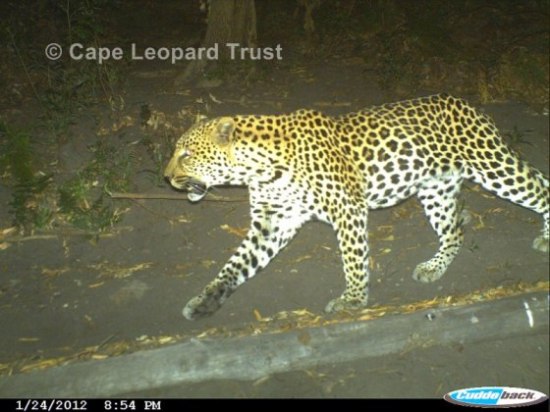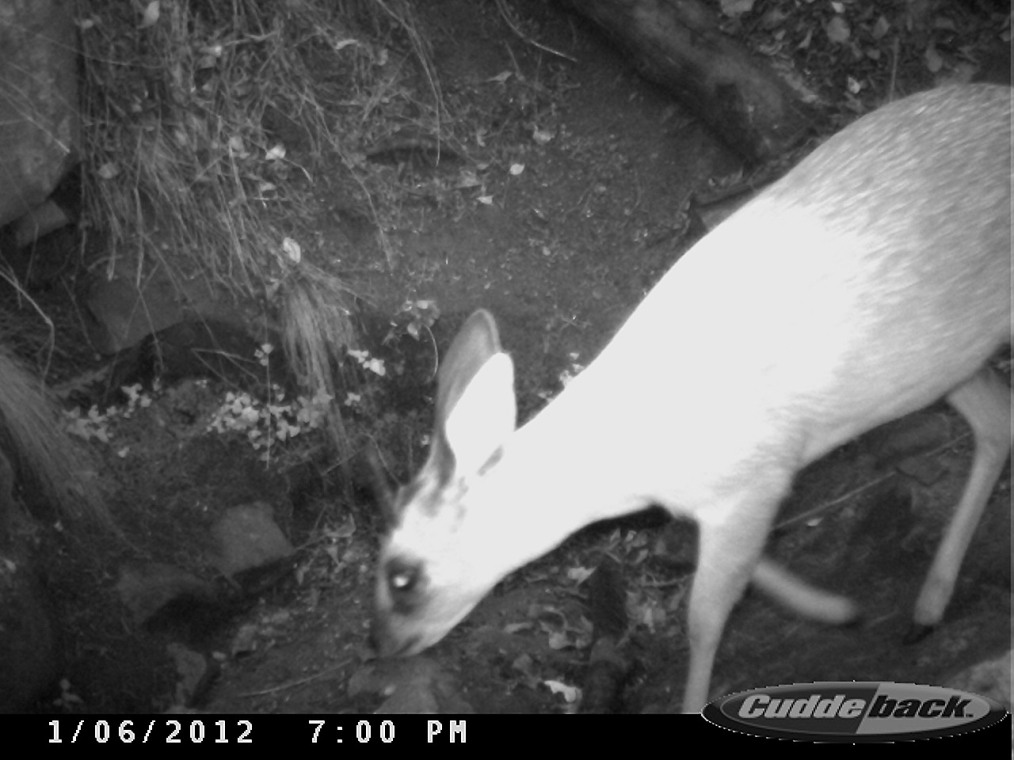The Cape Peninsula has never supported large numbers of mammals, given the low carrying capacity of the fynbos biome. What it lacked in numbers though it made up for in diversity. The larger mammals have disappeared – from the blue buck that was shot to extinction, to the Cape Leopard that still clings tenuously to survival in the Cape Folded Mountains, a little over 50 kilometres away.
When we first moved into the Stone Cottage at BlueGumsFree we were nevertheless surprised at how few mammals we saw, and like so many other natural imbalances in the area, we put it down to the invasive alien trees. While the return of the fynbos has seen an increase in insects, reptiles, rodents and birds there has been no noticeable increase in the number of mammals that use the property as part of their territory.
Of course most mammals that live on the mountain are either crepuscular or nocturnal, so about eighteen months ago I purchased a camera trap. I do not attract mammals by laying down bait, but I position the camera trap on small game trails or overlooking permanent sources of water. We have had some impressive sightings, but they remain rare and unusual.
Leopards may have been eradicated from the Peninsula over 150 years ago, but the caracal still holds out. A sighting of a caracal remains an event that generates enormous excitement. In the 12 years that we have lived here, the residents of BlueGumsFree have had a total of 10 sightings. This has included 5 sightings of the same large male, and a single sighting of a female with two half-grown kittens.
Equally unusual and impressive are sightings of Cape Clawless Otters, although fellow members of the Castle Rock Conservancy, who live about a kilometre north of BlueGumsFree have a resident family in the watercourse that passes by their plots. In the twelve years there have been only three sightings of otters on the actual Blue Gums land. Water Mongoose are perhaps even less abundant here and I have only seen one – in my first year here. Grey Mongoose are much more common and we pick them up regularly on the camera trap.
Our most regular visitors are the porcupines and they have tangled with our dogs on more than one occasion, once fatally so, when a porcupine quill killed Jezzie our loyal fox-terrier cross.
Another sad demise was the death of a Cape Grysbok that was a regular visit to our watercourse. We found one of our dogs chewing its skull, but are certain that she had simply scavanged the remains of a baboon or caracal kill.
The large and small spotted genets are uncommon, but by no means rare, although I often wonder about the toll that roadkills have on their population. On more than one ocasion we have had them as night-visitors in our kitchen.
We have also had the odd unwelcome day visitor in our kitchen – members of the resident baboon troop. As Rosalind likes to point out, though, in the twelve years that we have been here, the baboons have taken over our home on only six occasions. I hasten to add that three of those occasions have been in the last two years when the baboon monitors in the area became a permanent feature. This is most certainly not coincidental, but more about our resident baboons and the group of humans they lead up and down Cape Point Rd. in my next blog post. For the moment I must end by saying that if it was not for one other species of mammals – our brave and baboon-savvy dogs (German Shepherd, Border Collie, Australian Cattle Dog all converted into South African baboon dogs) – the baboons would long have become a menace instead of being the opportunistic but charismatic neighbours that they are.







Leave a comment